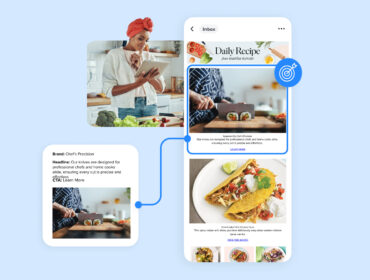What is non-endemic advertising, and why should retailers care?
The industry is abuzz with talk of non-endemic advertising. And where there’s talk of non-endemic advertising there’s talk of retail media networks. Here we’ll distill:
- Non-endemic advertising and what it is
- Why retailers should care about non-endemic advertising
- Why the boom in non-endemic advertising and Retail Media Networks (RMNs)
- Reasons why retailers are skeptical of non-endemic advertising — and why they shouldn’t be
Let’s dive in.
Defining non-endemic advertising
Non-endemic advertising is the practice of buying and selling retailer ad inventory to promote a product or service from a brand that isn’t sold by the retailer, but is relevant or complementary to the retailer’s customer and their needs. Let’s look at an example.

A life insurance company — we’ll call it LifeInsured — might identify that some of their best customers are between 30 and 40 years old, are new parents, travel regularly, and are the primary breadwinners of their household. A retailer like Kohls, which doesn’t sell life insurance, likely has relationships with LifeInsured’s desired audience. Kohls could sell LifeInsured ad placements that enable them to reach their shared audience, aged 30 to 40, in contextually relevant environments, like product pages for home goods or email receipts for purchases of diapers and baby formula. This partnership is beneficial to both parties: LifeInsured gets their ad in front of the right user at the right time; Kohls captures untapped dollars.
So, why should retailers care about non-endemic advertising?
By selling media to non-endemic advertisers, retailers can unlock an entirely new revenue stream. Retailers everywhere are already capitalizing on endemic opportunities to drive revenue with Retail Media Networks (RMNs) — and business is booming.
According to eMarketer, US digital retail media ad spending will reach $61.15 billion by 2024, making up nearly 20% of digital ad spending. And with 82% of US advertisers planning to increase their spending with retail media networks in 2023, retailers face the immediate potential for significant growth by diversifying their portfolios and incorporating media into their business.
But, with everyone chomping at the bit, many retailers are running out of inventory. Opportunities do exist however, for retailers to extend their onsite ad program into the email channel — a channel often forgotten in the RMN space, but rife with options. In doing so, retailers can drive additional high-margin revenue for themselves and added value for their customers, onsite or otherwise.
Non-endemic advertising: risk vs. reward
Some reading this might ask themselves: Wouldn’t non-endemic advertising distract the buyer experience? Won’t non-endemic advertising drive traffic away from my digital properties and cost my business money?
These are all reasonable questions and concerns, and of course, when embarking on any new business venture, analyzing risk against reward is critical to ensuring success. However, the reality is that non-endemic advertising enables retailers to further capitalize on interactions between them and their audiences — it creates more opportunities for revenue rather than minimizing them.

By enabling non-endemic advertising on their digital properties, retailers secure incremental revenue by advertising products they’d never sell — so there’s no risk of cannibalizing business. And, because retailers own their digital properties, they’re the ones that get to set up the rules of engagement for advertising on said properties. Retailers can outline where ad placements appear and how many to ensure they uphold customer experience standards while delivering the best value for their advertiser partners and themselves.
Retail media networks are here to stay
Retailers have amassed valuable and unique customer insights that shed light on people’s lifestyles, significant life events, and buying habits. And advertisers recognize this, hence their rapid and enthusiastic investment in RMNs over the last few years. But there are signs of headwinds. Consumer trends have changed since the end of the pandemic and retailers that have grown accustomed to this extra revenue have to adapt. This, coupled with a growing interest in first-party data, makes advertisers eager to access first-party audience data that will enable relevant, effective audience and brand safe targeting for the foreseeable future.


